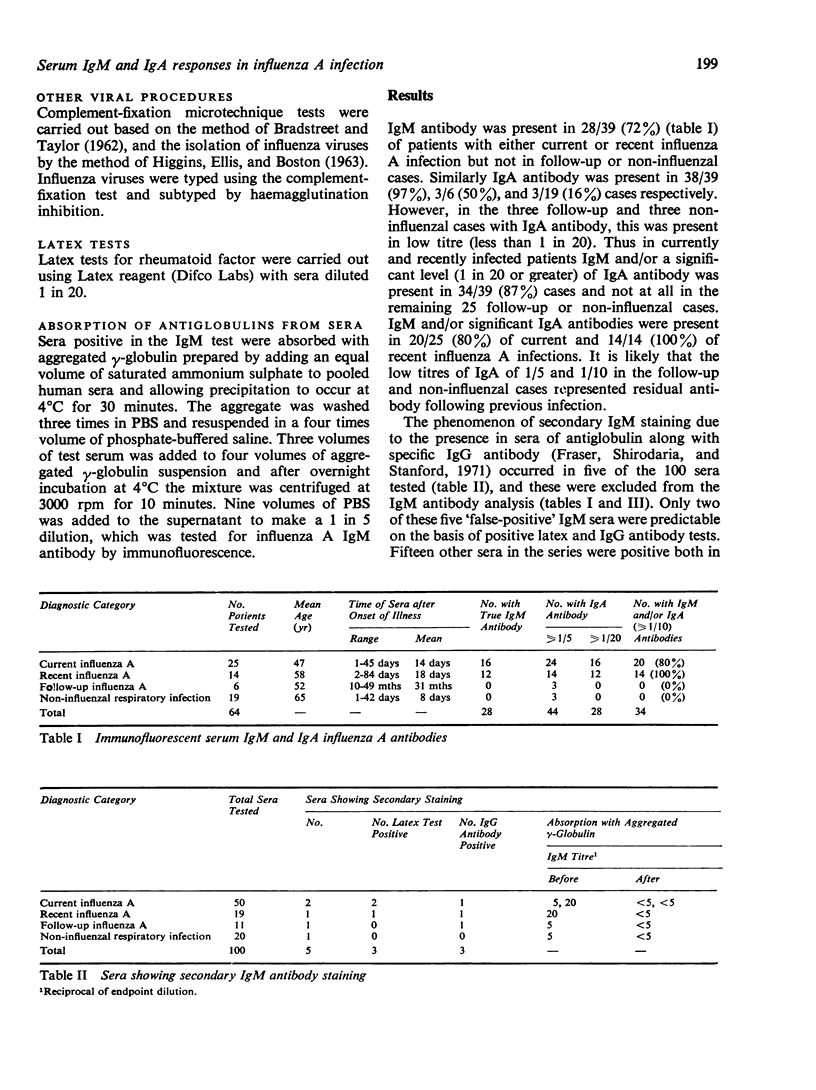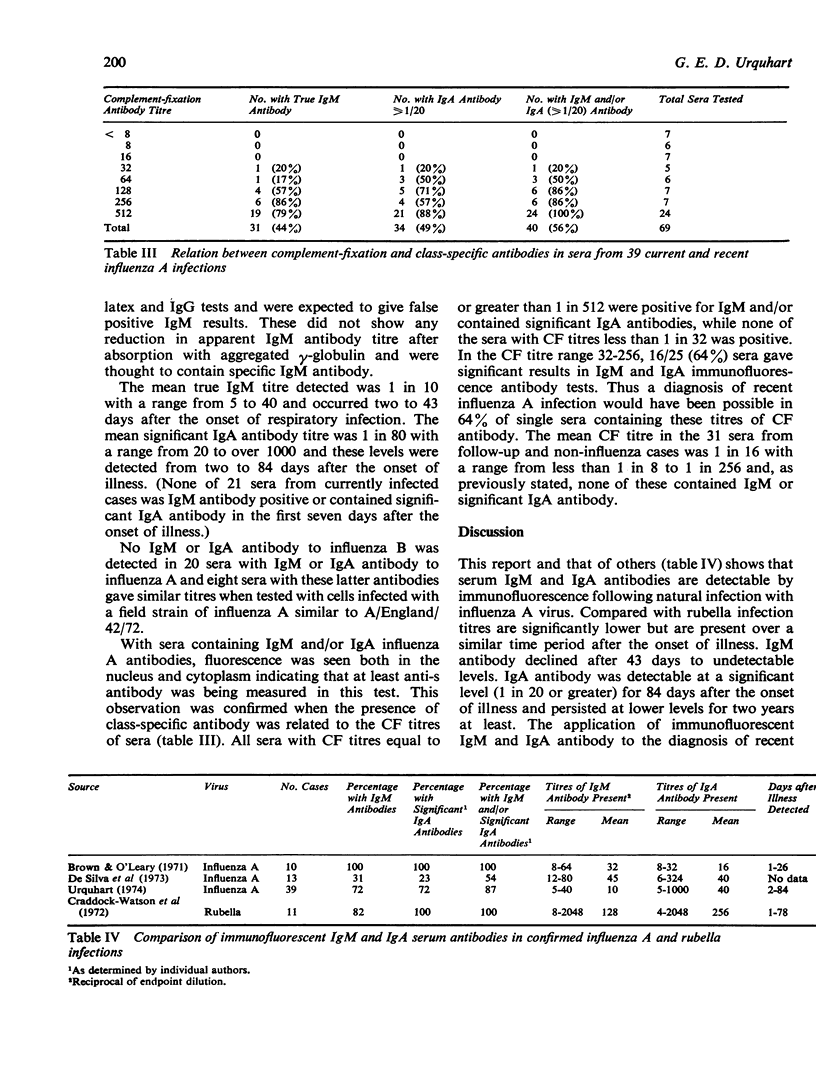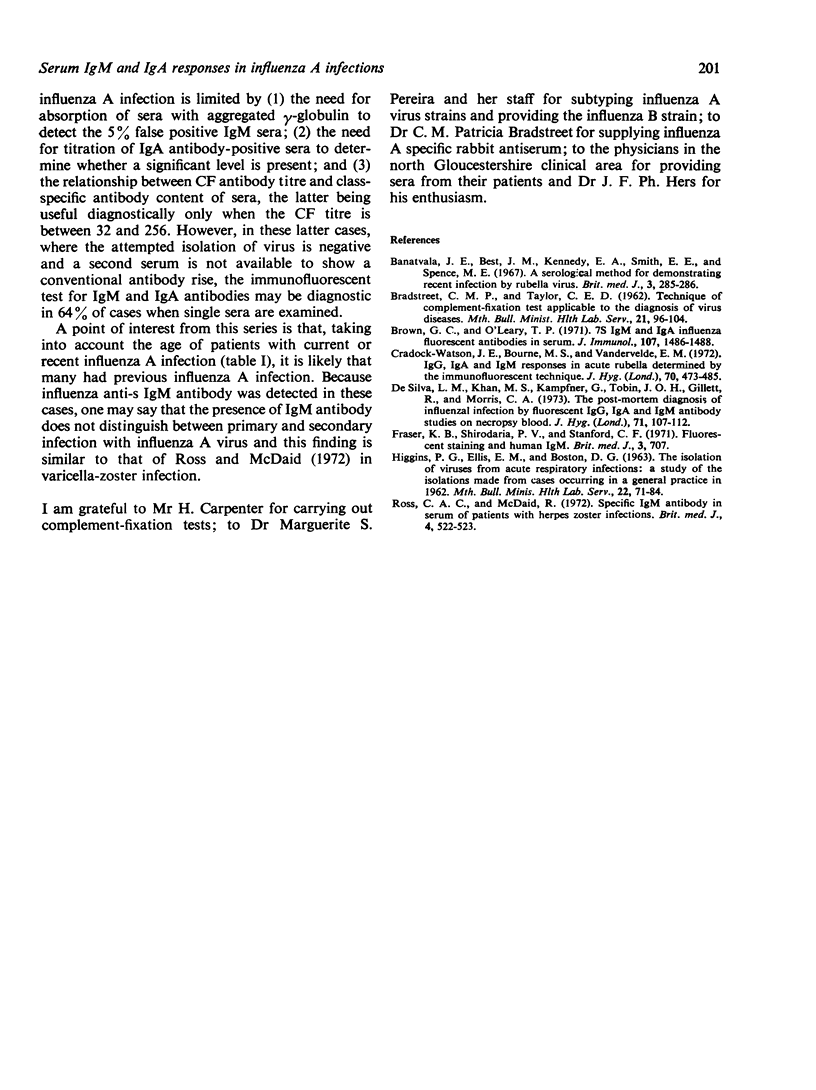Abstract
Immunofluorescent serum IgM and/or a significant level of IgA antibody was detected in 87% of 39 cases of current or recent influenza A infection from two to 84 days after the onset of illness. Secondary IgM staining occurred in 5% of sera and a significant correlation was found between complement-fixing and class-specific antibodies. It was estimated that the immunofluorescent test could be diagnostic in 64% of single sera with levels of CF antibody between 32 and 256, and because anti-s antibody was detected in the IgM test this test did not differentiate primary and secondary influenza A infection.
Full text
PDF



Selected References
These references are in PubMed. This may not be the complete list of references from this article.
- BRADSTREET C. M., TAYLOR C. E. Technique of complementfixation test applicable to the diagnosis of virus diseases. Mon Bull Minist Health Public Health Lab Serv. 1962 May;21:96–104. [PubMed] [Google Scholar]
- Banatvala J. E., Best J. M., Kennedy E. A., Smith E. E., Spence M. E. A serological method for demonstrating recent infection by rubella virus. Br Med J. 1967 Jul 29;3(5560):285–286. doi: 10.1136/bmj.3.5560.285. [DOI] [PMC free article] [PubMed] [Google Scholar]
- Brown G. C., O'Leary T. P. 7S IgM and IgA influenza fluorescent antibodies in serum. J Immunol. 1971 Nov;107(5):1486–1488. [PubMed] [Google Scholar]
- Cradock-Watson J. E., Bourne M. S., Vandervelde E. M. IgG, IgA and IgM responses in acute rubella determined by the immunofluorescent technique. J Hyg (Lond) 1972 Sep;70(3):473–485. doi: 10.1017/s0022172400063063. [DOI] [PMC free article] [PubMed] [Google Scholar]
- De Silva L. M., Khan M. S., Kampfner G., Tobin J. O., Gillett R., Morris C. A. The post-mortem diagnosis of influenzal infection by fluorescent IgG, IgA and IgM antibody studies on necropsy blood. J Hyg (Lond) 1973 Mar;71(1):107–112. doi: 10.1017/s002217240004626x. [DOI] [PMC free article] [PubMed] [Google Scholar]
- Fraser K. B., Shirodaria P. V., Stanford C. F. Fluorescent staining and human IgM. Br Med J. 1971 Sep 18;3(5776):707–707. doi: 10.1136/bmj.3.5776.707. [DOI] [PMC free article] [PubMed] [Google Scholar]
- HIGGINS P. G., ELLIS E. M., BOSTON D. G. The isolation of viruses from acute respiratory infections. A study of the isolations made from cases occurring in a general practice in 1962. Mon Bull Minist Health Public Health Lab Serv. 1963 May;22:71–84. [PubMed] [Google Scholar]
- Ross C. A., McDaid R. Specific IgM antibody in serum of patients with herpes zoster infections. Br Med J. 1972 Dec 2;4(5839):522–523. doi: 10.1136/bmj.4.5839.522. [DOI] [PMC free article] [PubMed] [Google Scholar]


